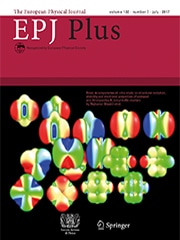Oct 12 2017
The solar system is full of various small bodies such as planetary moons, main belt asteroids, Jupiter Trojans, Centaurs, trans-Neptunian objects and comets. To study them, scientists typically analyse the radiation they reflect, which is referred to as polarimetry.
 Credit: Springer
Credit: Springer
Scientists not only focus on the intensity of the scattered radiation, but also on how photons oscillate in the plane perpendicular to their direction of propagation - that is, their polarisation. Combining these two aspects yields significantly better descriptions than data obtained from the intensity alone. In a paper published in EPJ Plus, Stefano Bagnulo from Armagh Observatory and Planetarium in Northern Ireland, UK, and colleagues review the state-of-the-art in polarimetry for studying the small bodies in our solar system. Combined with other observational techniques, such as thermal radiometry and visible photometry, polarimetry may be used as a remote sensing technique to measure asteroids' size, to reveal the composition and size variation of dust in comets or of aerosols in planetary atmospheres, to study the surface structure of asteroids, or even to detect extra-terrestrial biomarkers. So how does polarimetry work? The way light is polarised depends on the nature of the scattering surface, and the measured polarisation changes when the object is observed from different angles. Imagine that radiation hits an electron on a surface. That electron begins oscillating, and becomes more inclined to move in a direction parallel to the surface than to penetrate it. Therefore, the reflected light presents an excess of photons oscillating in the direction parallel to the surface, making the reflected light polarised. In this way, measuring polarisation can yield pertinent information on objects in the solar system. By combining it with other techniques, scientists can make important advances in the physical characterisation of these small bodies. Reference: S. Bagnulo et al. (2017), Polarimetry of small bodies and satellites of our Solar System, Eur. Phys. J. Plus 132:405 DOI 10.1140/epjp/i2017-11690-6